What types of textures are there?
Stretch ceilings have three main types of surfaces and one combined type, which differ not only in appearance, but also have a different effect on the interior design as a whole. Combined types have the characteristics of their constituent parts, so I don’t see any point in dwelling on this in detail.
Earlier, I made a detailed comparison of glossy, matte and satin ceilings. Study it in more detail to delve into the topic, and if you don’t want to, I have prepared a comparative table of all textures.
Glossy
This type of ceiling is distinguished by its bright shine and high reflectivity. Glossy stretch ceilings not only look very impressive and catchy, but also visually increase the volume of space, creating a feeling of some airiness in it. An ideal option for small and dark rooms, as there will be more light due to reflection.
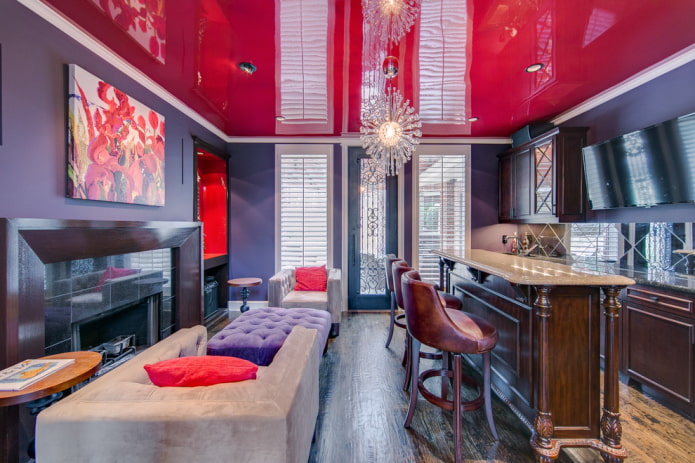
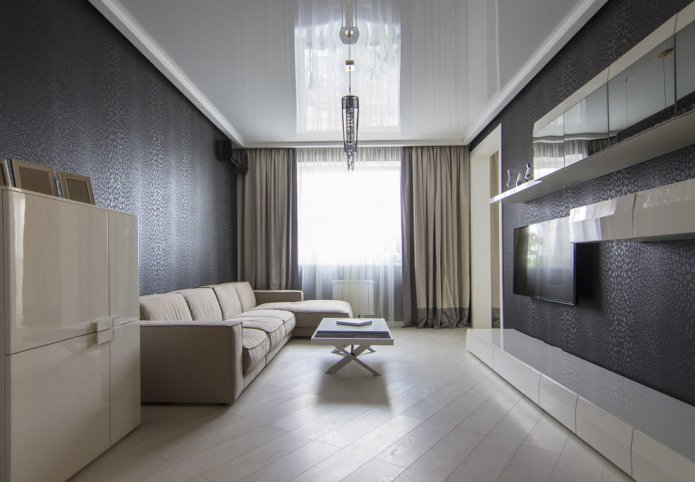

Matte
The main difference is that the surface does not reflect light and has no glare. Matte ceilings look laconic and simple. The surface resembles a regular painted ceiling. Often used in classic and discreet interiors.
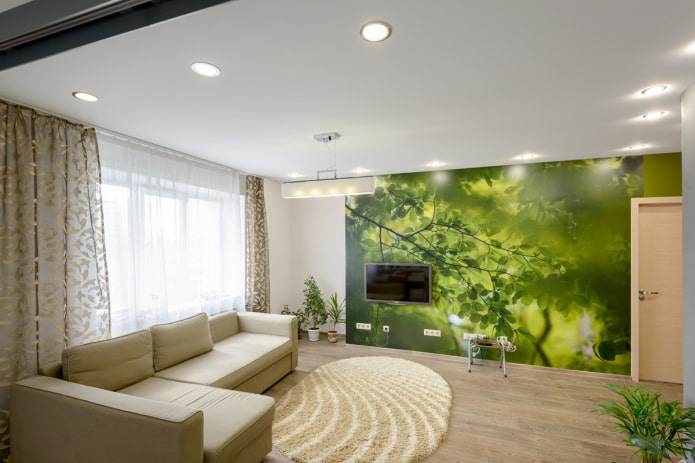
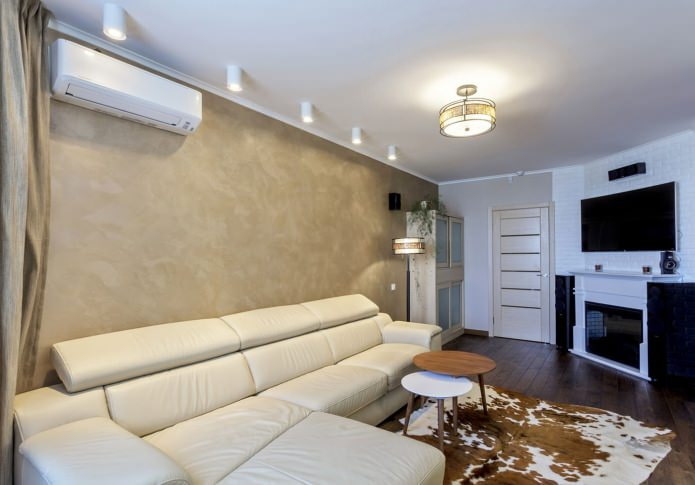
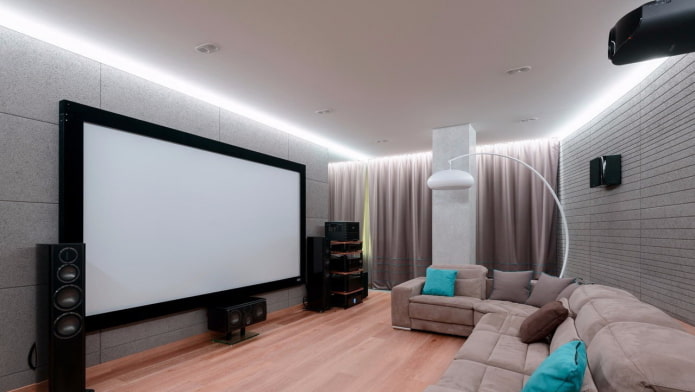
Satin
Stretch ceilings made of satin are distinguished by a soft and calm shine. And thanks to their unique light reflection, they resemble mother-of-pearl. The soft and diffused reflection of the satin texture can change shades depending on the direction of the light. They have an unusual glow and are an ideal option for creating cozy interiors.
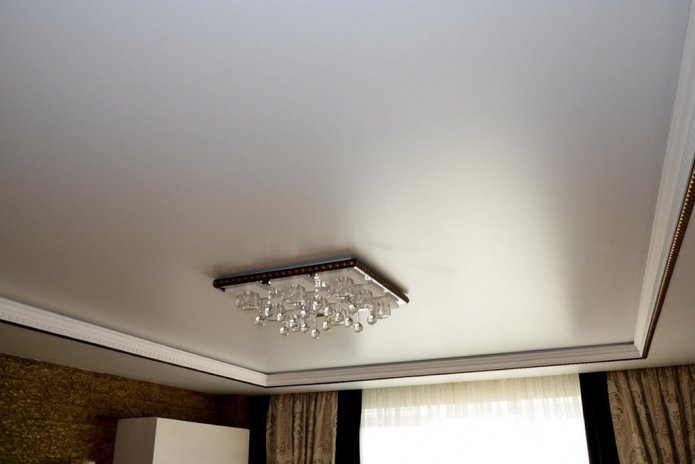
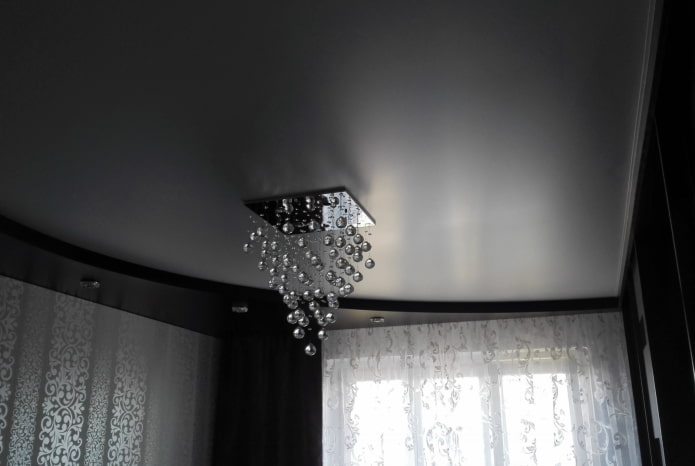
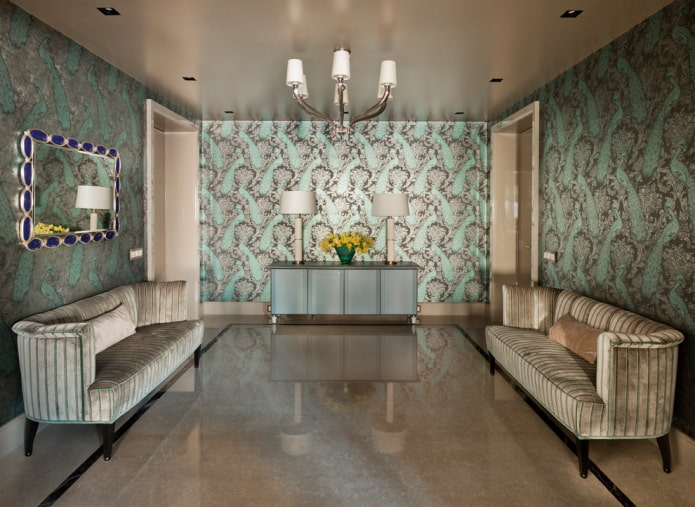
In the photo, a living room with a satin stretch ceiling in beige looks great in a classic style.
Types of materials and technical characteristics
There are two types of materials used to make canvases. I will tell you about the main features of each type, as well as analyze their pros and cons.
Check out a detailed comparison of fabric and PVC ceilings.
PVC film
A very practical finishing option with a huge number of positive qualities. The polyvinyl chloride base is durable, it is practically not subject to aging and various influences. The film does not allow water to pass through, so such a surface can save your repairs from leaks from above. But this material does not tolerate low temperatures well, so I do not recommend installing it on an unheated balcony.
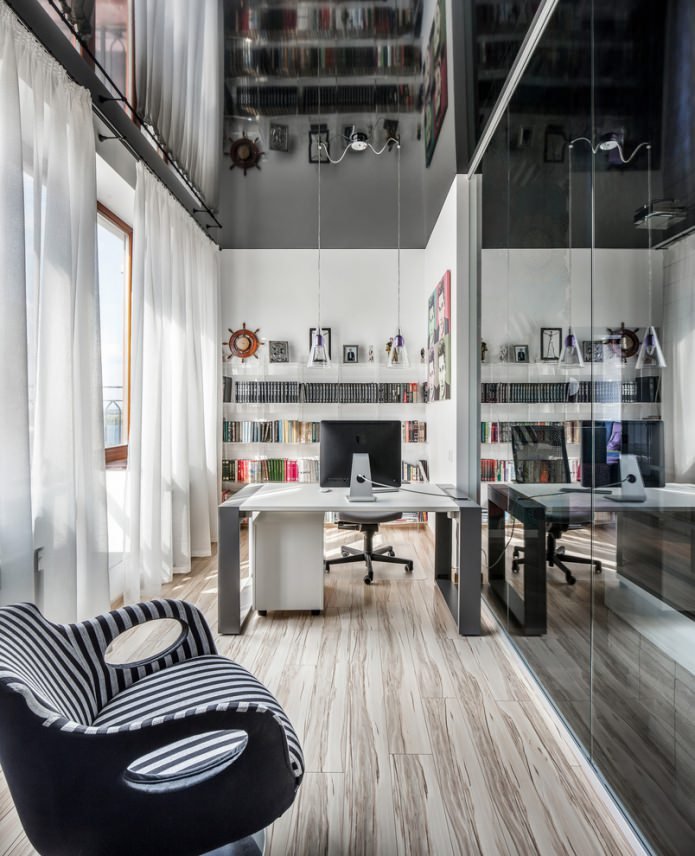
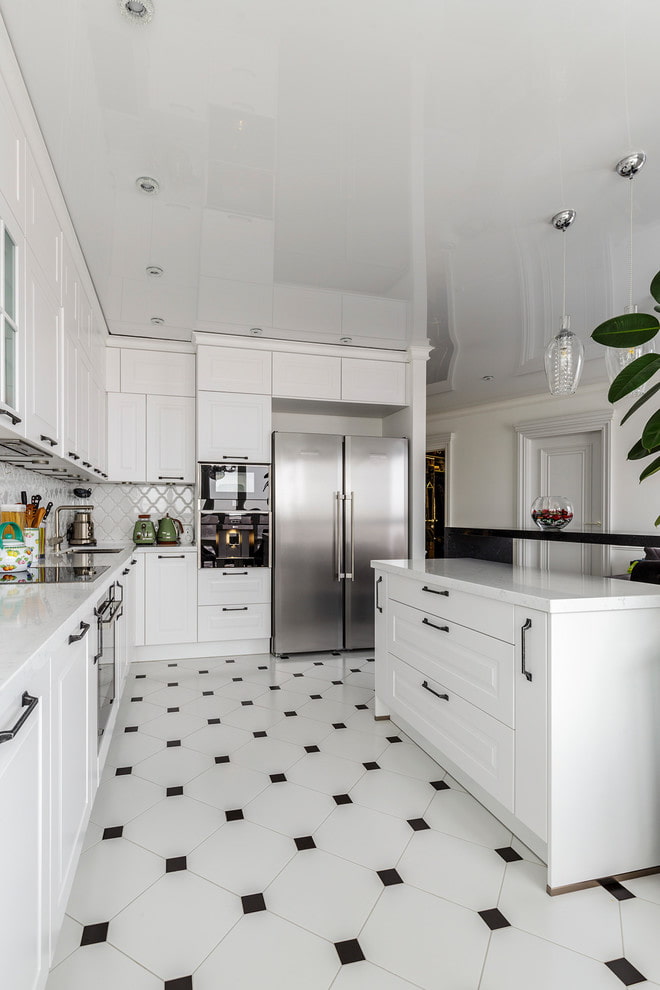
The main characteristics of film coverings.
Thickness
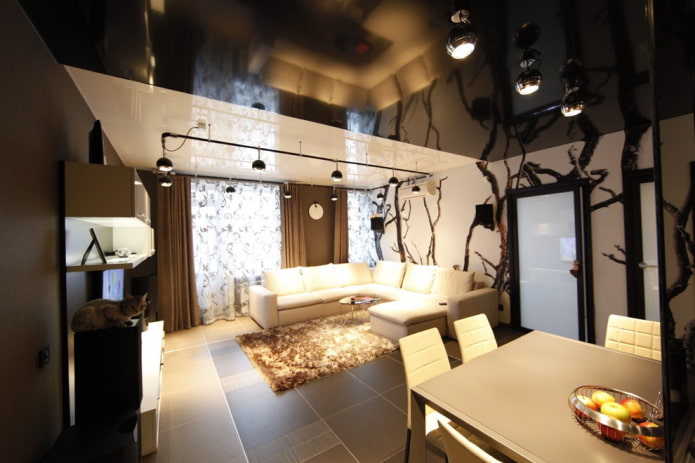
The photo shows a film ceiling in the interior of a kitchen-living room.
See the table for the advantages and disadvantages of PVC film stretch ceilings:
They have an aesthetic appearance.
They are susceptible to mechanical damage.
They are durable.
They can deform from very high or low temperatures.
Fireproof.
Moisture-resistant.
They have a wide variety of options.
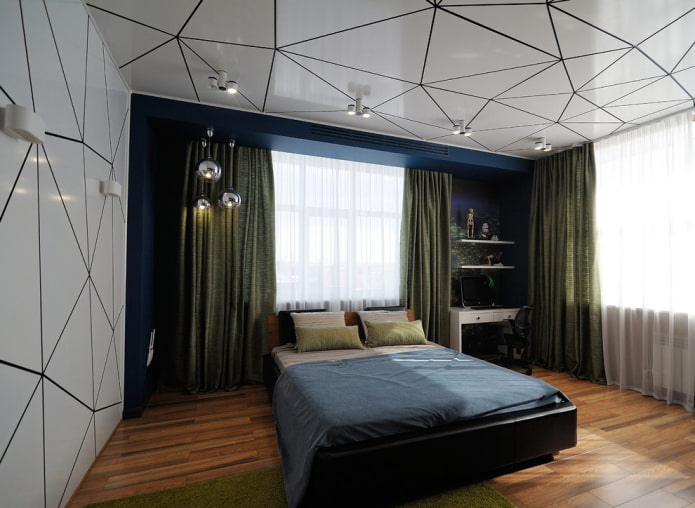
Fabric
Ecologically clean and safe fabric stretch ceilings have a breathable surface and, accordingly, provide a healthier microclimate in the room. I recommend using fabric canvases in dry rooms. One of the differences is that you don’t need a heat gun for installation. And it’s much faster than PVC. And if they are treated with special compounds, they can acquire more practical properties.
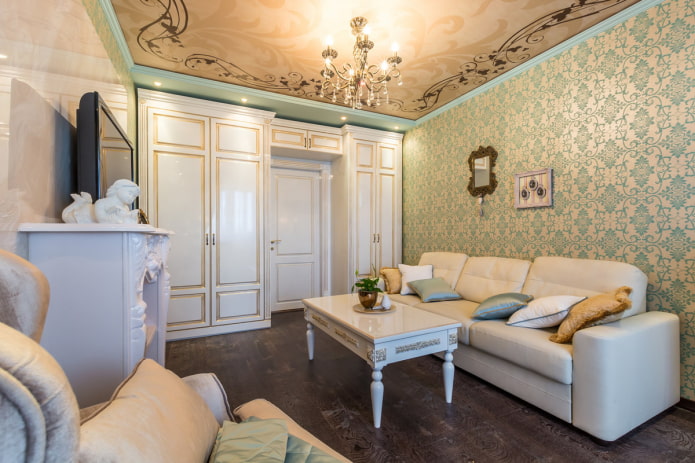
Technical characteristics of fabric ceilings:
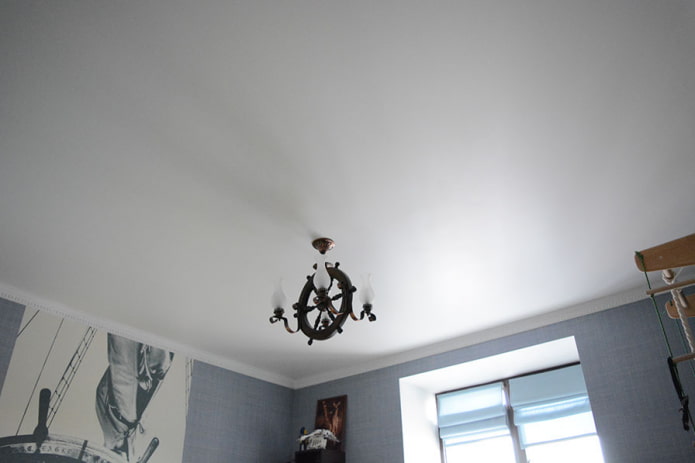
For clarity, I have prepared a comparative table of pros and cons:
- No smell.
- Resistant to moderate mechanical damage.
- Resistant to frost and temperature changes.
- Does not fade.
- Easy installation.
- Can be repainted about four times.
- Fireproof (subject to fabric treatment).
- Eco-friendly.
- Breathes.
- Does not hold water.
- If a small section is damaged, the whole thing will have to be replaced.
- Seamless option only 5 meters.
- The cost is higher than that of PVC ceilings.
Types of designs
Stretch ceilings are also classified by the number of levels.
Single-level
Such stretch models are a universal and the most budget option. They create a classic flat ceiling surface and are considered an ideal solution for small spaces without any special design frills.
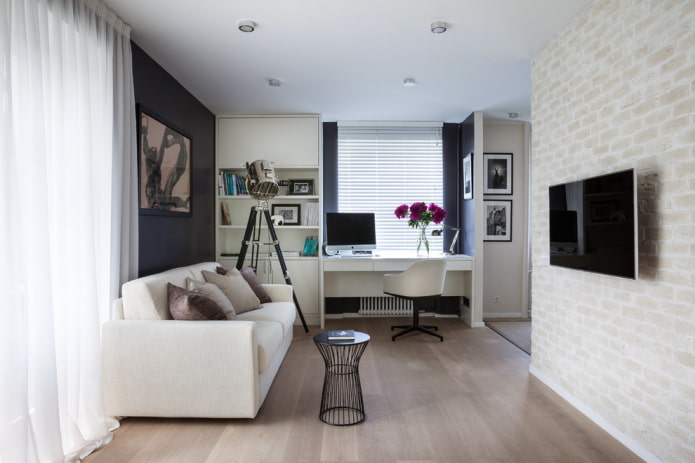
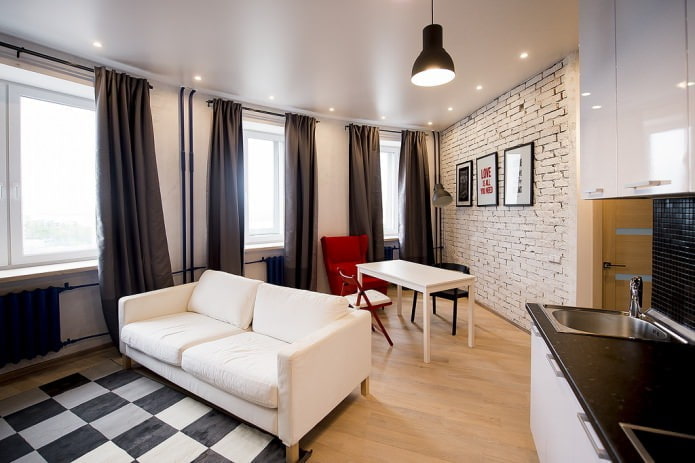
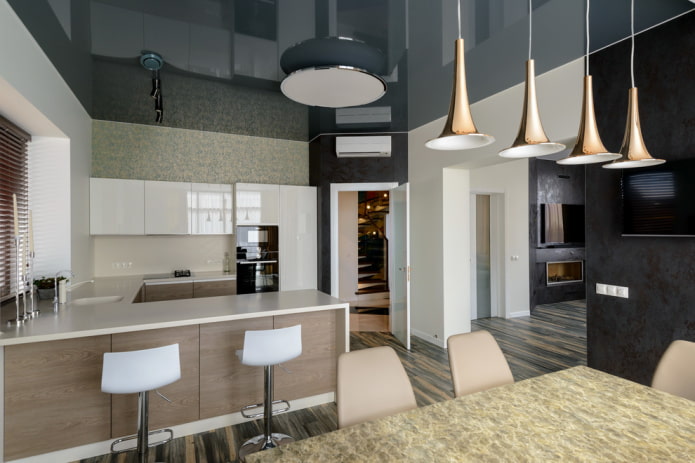
The photo shows the interior of a modern kitchen with a single-level glossy stretch ceiling in gray.
Two-level
A stretch ceiling consisting of two levels allows you to create unusual color and texture combinations. With the help of various effective combinations, you can emphasize the interior and make certain accents in it. It is also often used for room zoning.
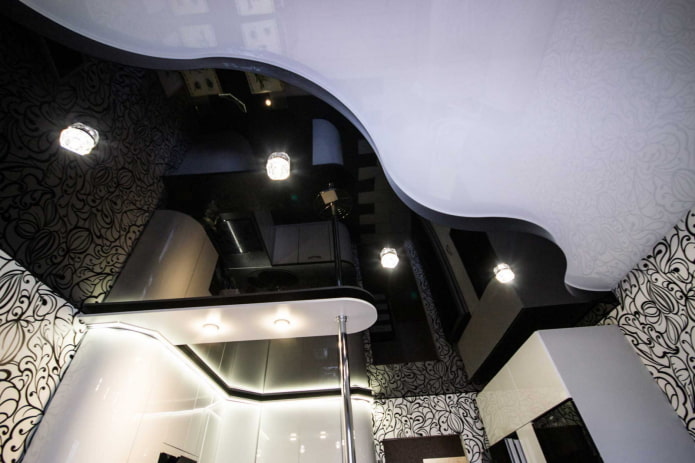
Multi-level
Multi-level structures not only perfectly emphasize and transform the design of the room, but also cope with the visual zoning of space. They provide an opportunity to construct a ceiling with a unique design. However, their cost significantly exceeds all previous options.
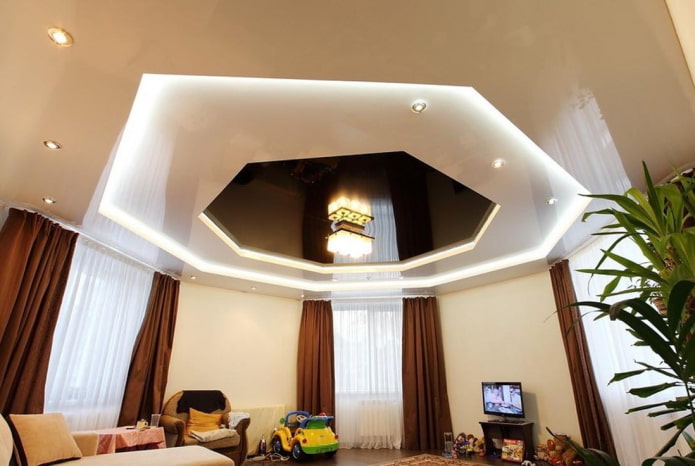
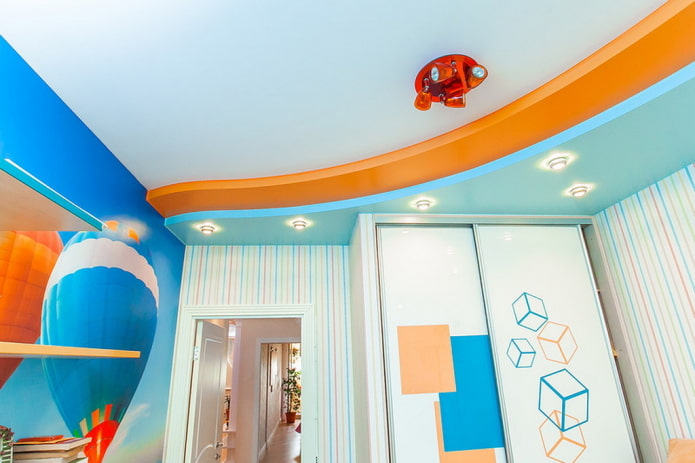
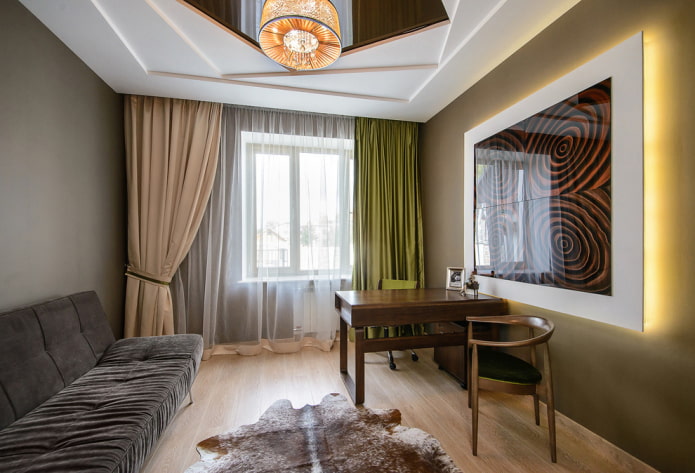
The main advantages and disadvantages of multi-level ceiling models.
- Quite simple and quick installation.
- Single-level products do not hide the height of the room. Therefore, they can be installed even in small rooms with low ceilings.
- Relatively low price.
- They look quite simple.
- They cope perfectly with visual zoning of space.
- They can combine different colors and textures and thus create a unique and expressive design.
- They create some difficulties in maintenance.
- Visually reduce the height of the space.
- They can visually change and adjust the geometry of the room.
- Allows you to create interesting and unusual shapes.
- Very high cost.
- Complex maintenance.
- Multi-level ones are better chosen for decorating high and spacious rooms.
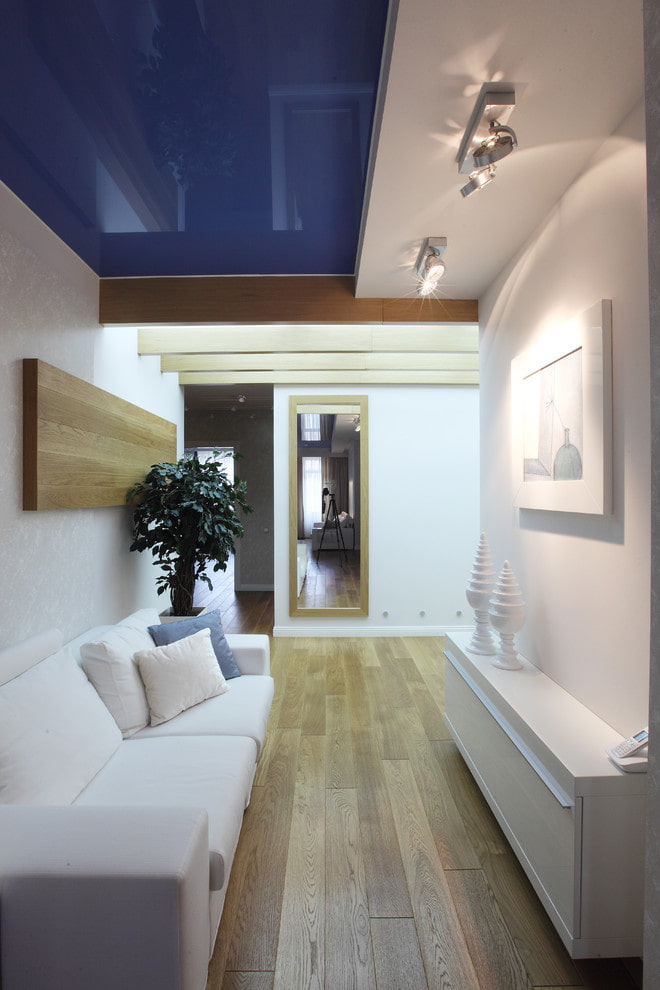
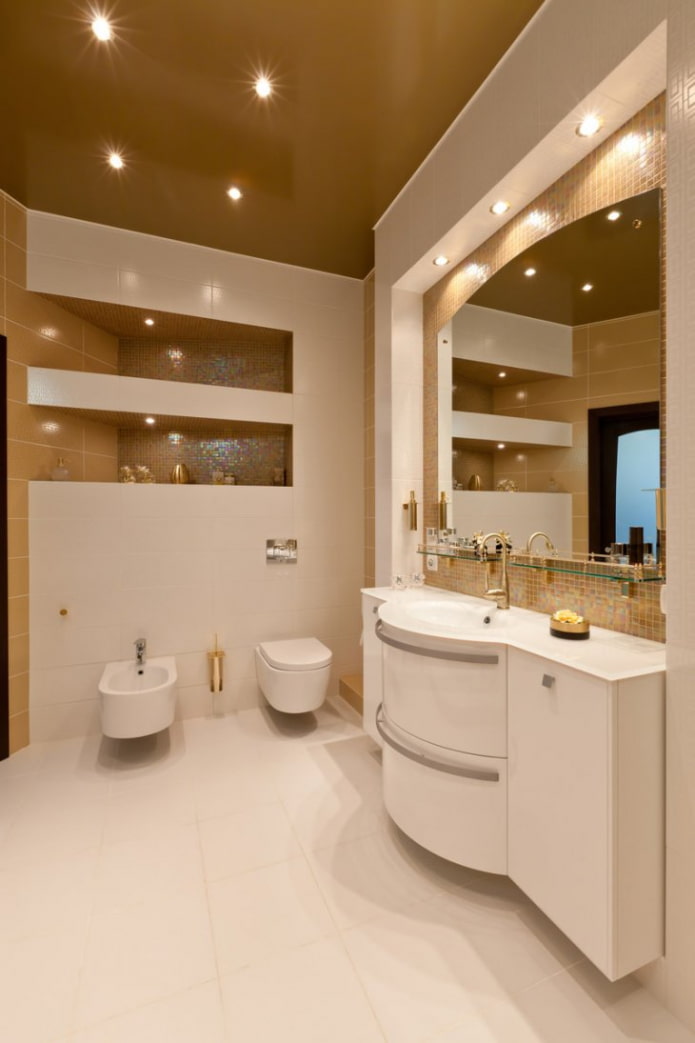
What sizes are there?
Size chart.
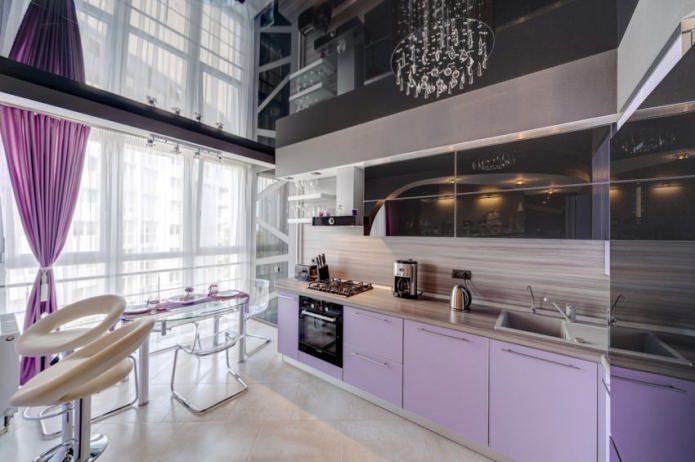
Ceiling shapes
With the help of stretch ceilings, you can create a wide variety of shapes.
Straight
The most traditional and classic option, which, despite its simplicity, looks very elegant. The straight ceiling plane forms strict and clear interior lines.
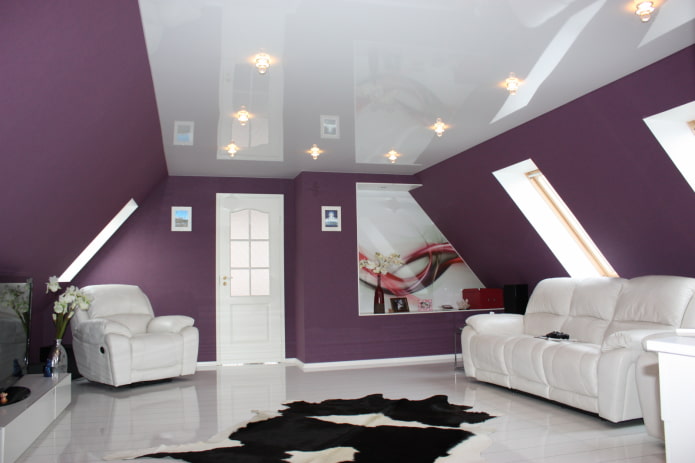

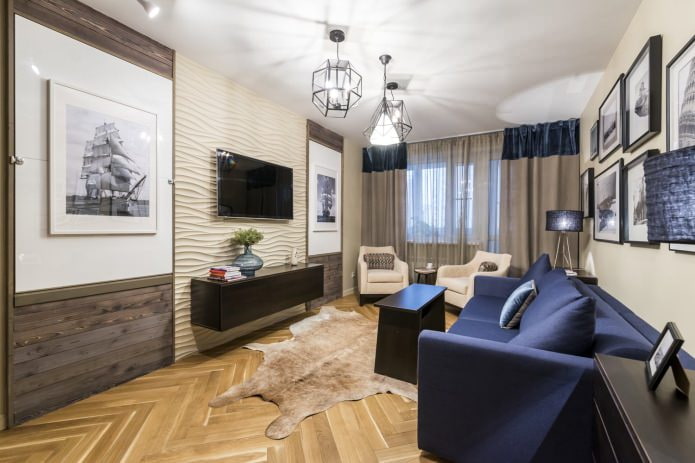
The photo shows a living room with a white straight stretch ceiling.
Conical shape
A decorative element of a conical shape with a teardrop or truncated end allows you to place accents on the ceiling space or hide various defects. A cone with original lighting or a chandelier will become a unique art object for the entire room.
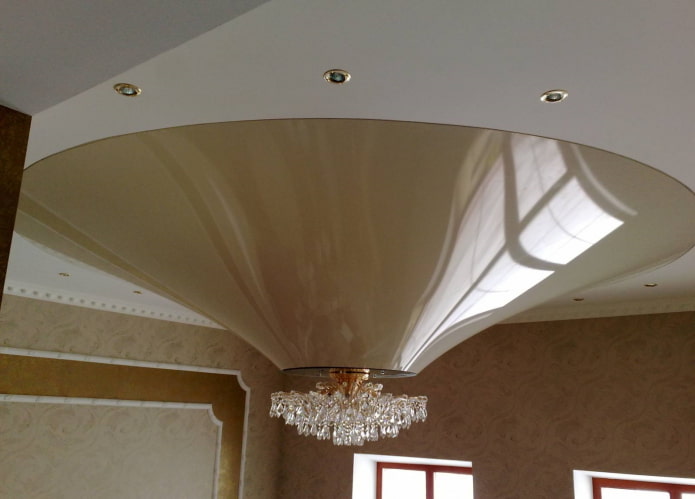
In the shape of a wave
This design can have different sizes and colors, and differ in synchronous, cut or smoothly fading periodicity of waves. Such wave-shaped models give the room a specific style.
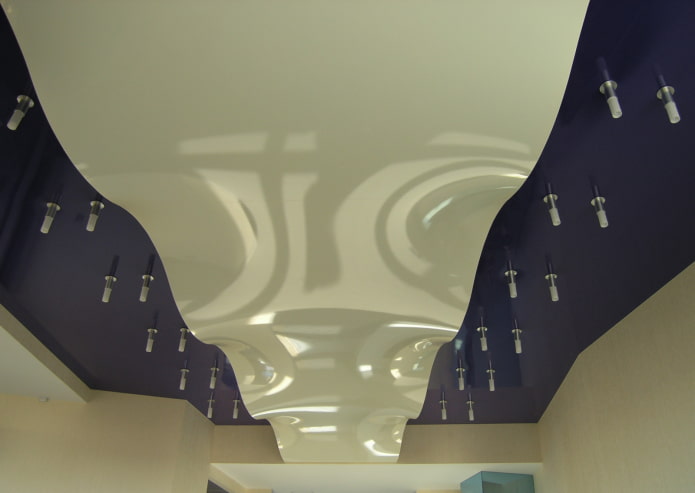
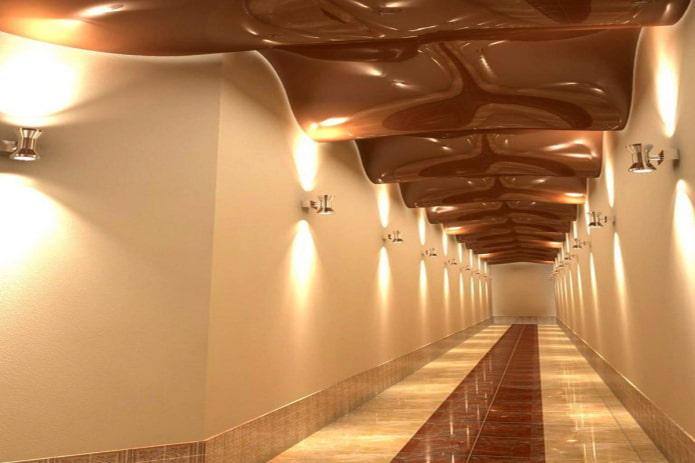
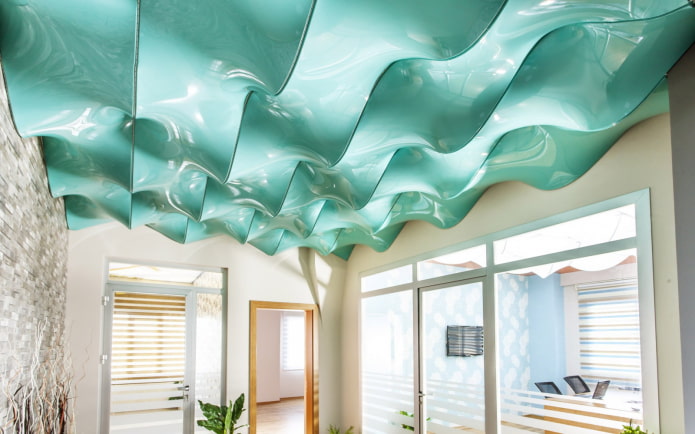
Arched
Semicircular ceiling shapes will add more softness, tranquility and comfort to the interior. Arched vaults create a smoother transition from the ceiling to the walls.
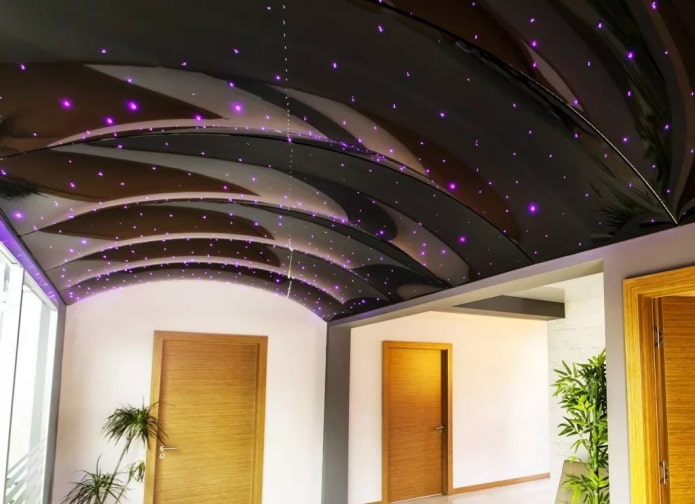
Dome-shaped
Dome-shaped ceilings can completely change the perception of the ceiling plane and add three-dimensional volume to it. This shape looks especially amazing and impressive in a glossy finish.
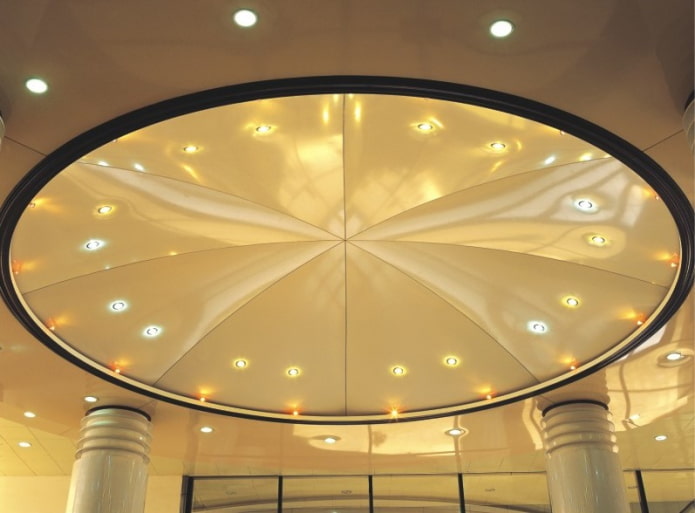
Color classification
Stretch ceilings are classified by color type.
Single-color
They have many color shades, which can vary depending on the material.
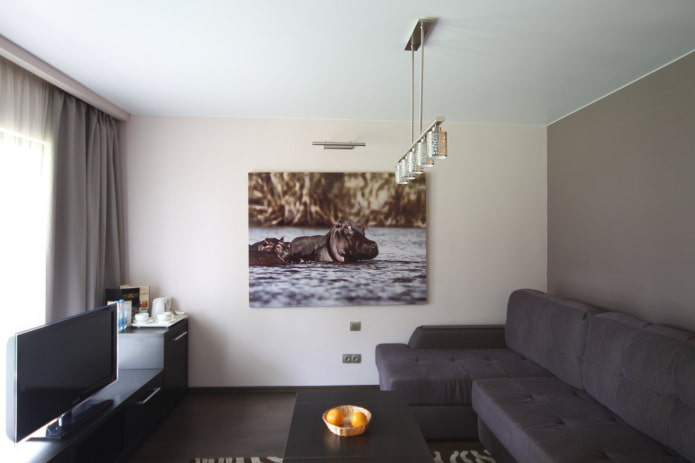
Mother-of-pearl
Iridescent ceilings are typical only for satin. Such a ceiling looks exquisite and therefore it is often used in a classic style. The decor acquires a truly luxurious and elegant image. Also, the color will differ depending on the location in the room.
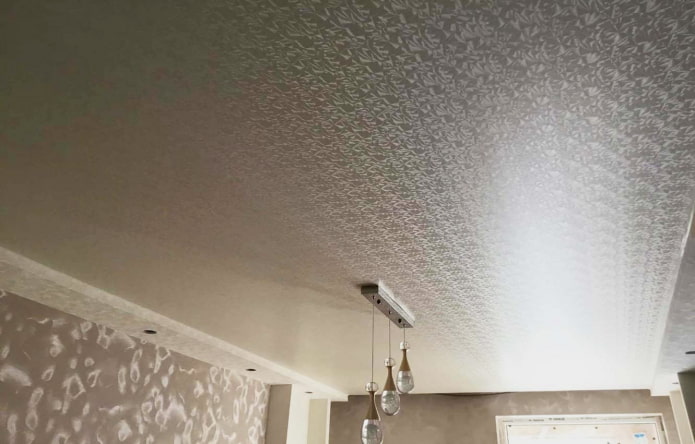
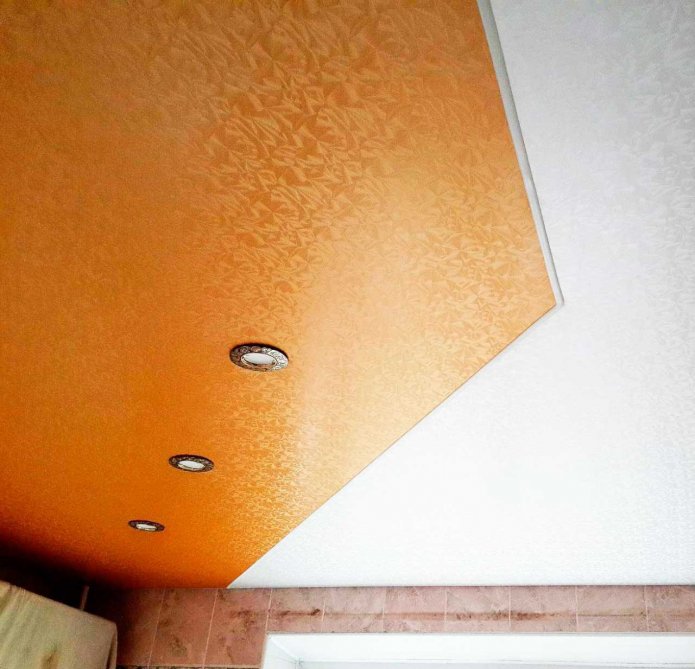
Two-color
The combination of a pair of colors on the ceiling has become a classic. Undoubtedly, such a solution is an exquisite decoration for a room of any shape and size. A skillful combination of the most advantageous colors and shades will become a very effective interior solution.
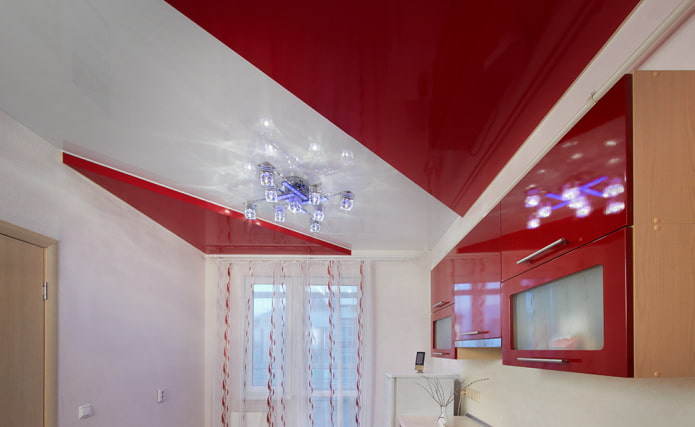
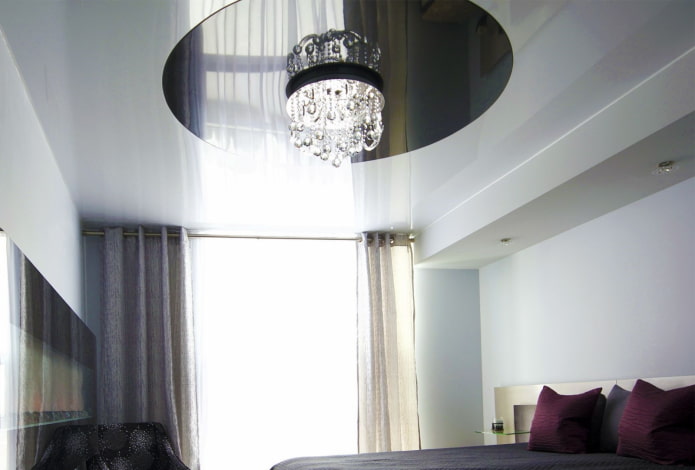
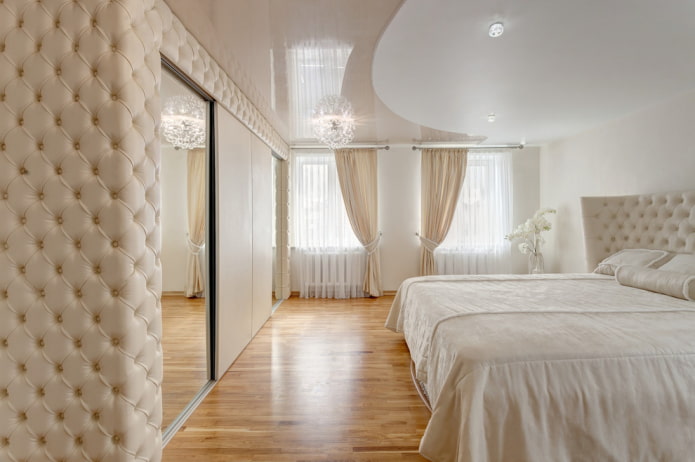
The photo shows a white and beige two-color stretch ceiling in the interior of a classic bedroom.
Multicolor
By using several colors, you can divide the room into certain functional zones. Different shades can be suitable for constructing both multi-level and single-level models.
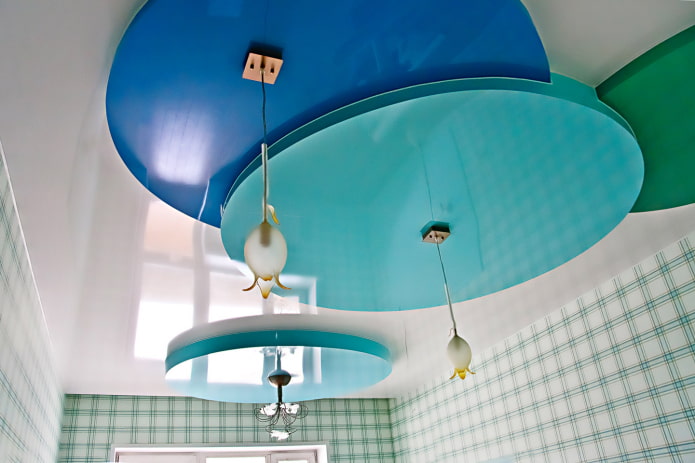
Varieties by the integrity of the canvas
Depending on the size of the canvas, the products are divided into two types.
Seamless
This type of stretch canvas is distinguished by the absence of a welded seam. Such a solid surface has a more aesthetic appearance and is quite practical.
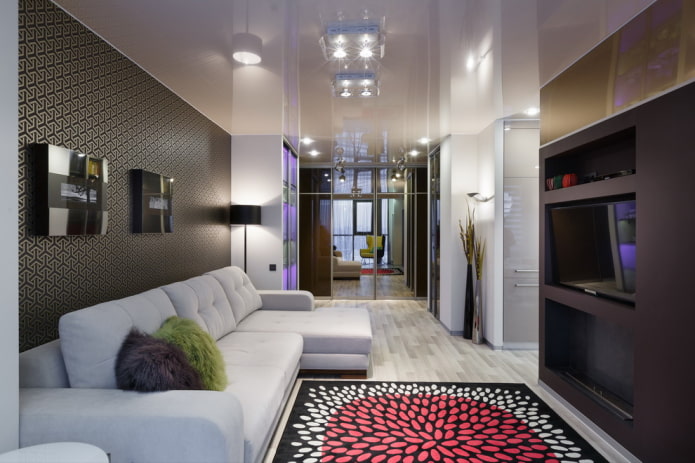
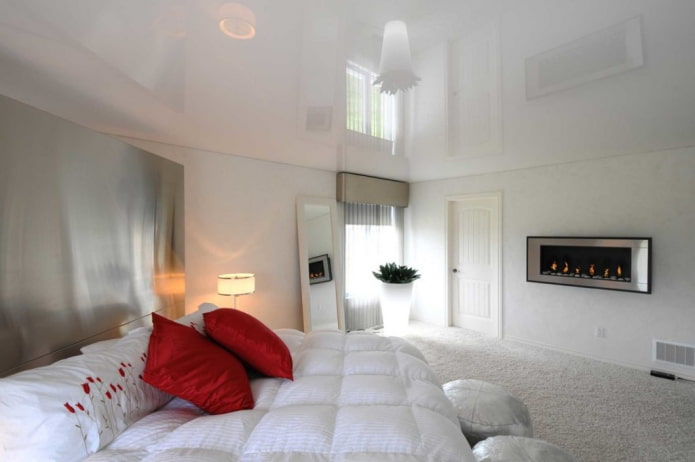
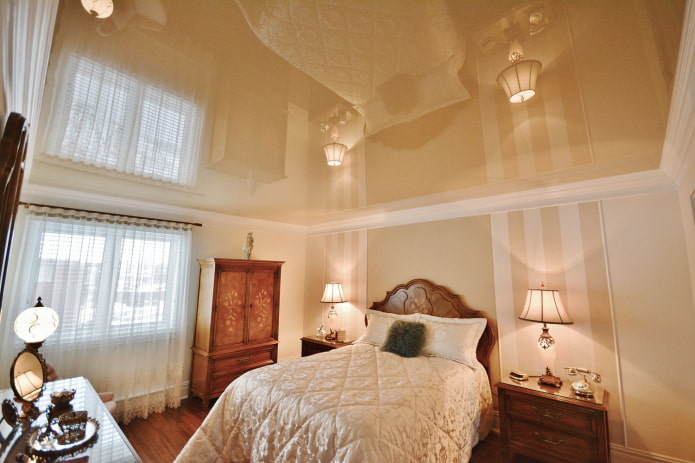
With a seam
They look no less attractive and beautiful. When directing the light at the right angle, the welded seam will be almost invisible.

Options for the presence of a gap between the wall and the ceiling
There are two main types.
Gapless
Such models fit tightly to the wall without the use of decorative tape, which creates an absolutely ideal look of the ceiling.
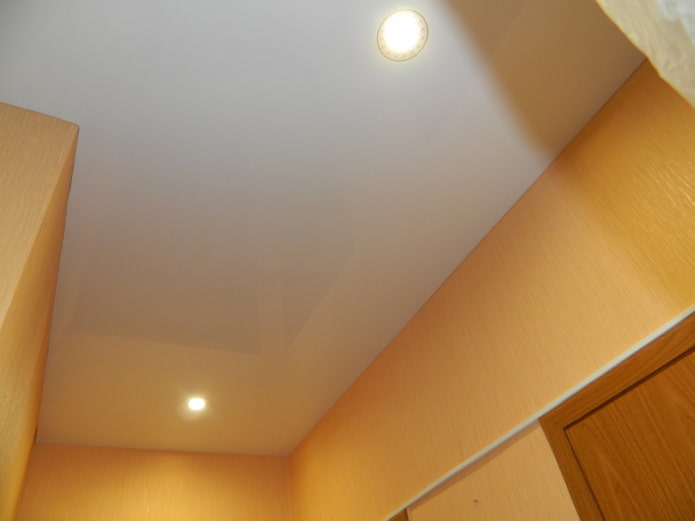
With a gap
The gap formed during installation between the wall and the canvas makes the external appearance of the structure unfinished. Therefore, it is often decorated with decorative tape, braid or ceiling plinth. Also, a gap is simply necessary to create a floating ceiling.
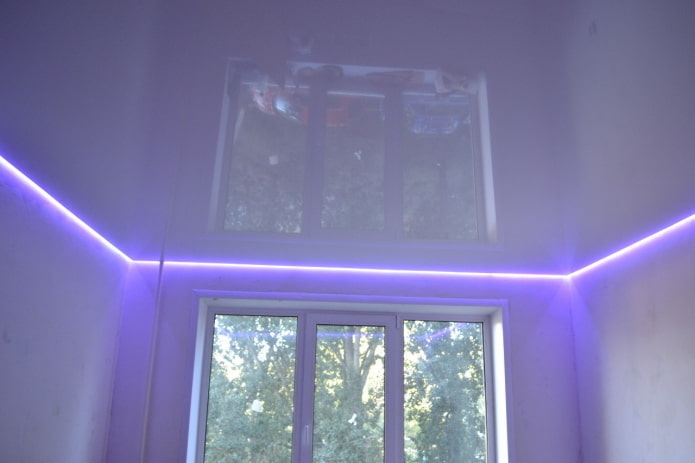
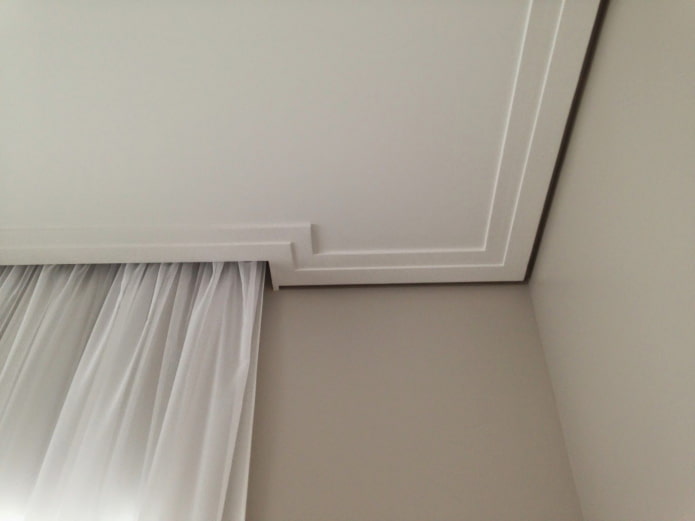
Design options
In addition to the design and color varieties, it is important to consider the features of various designs. I will tell you about the most popular ones, but there can be many more – it all depends on your imagination.
Photo printing
Absolutely any pattern can be applied to PVC sheets. At the same time, the paints are absolutely safe and environmentally friendly. If the manufacturer uses high-quality paints, the drawing will last long enough and will not fade. Ceilings with photo printing are often used in the interior of various rooms to create a unique atmosphere.
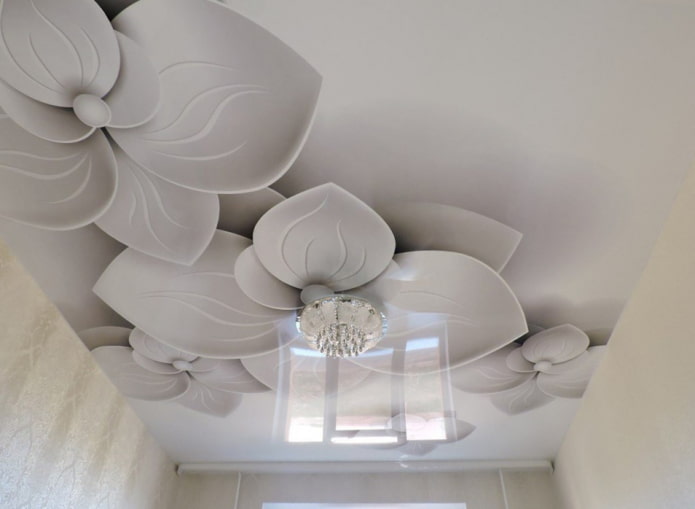
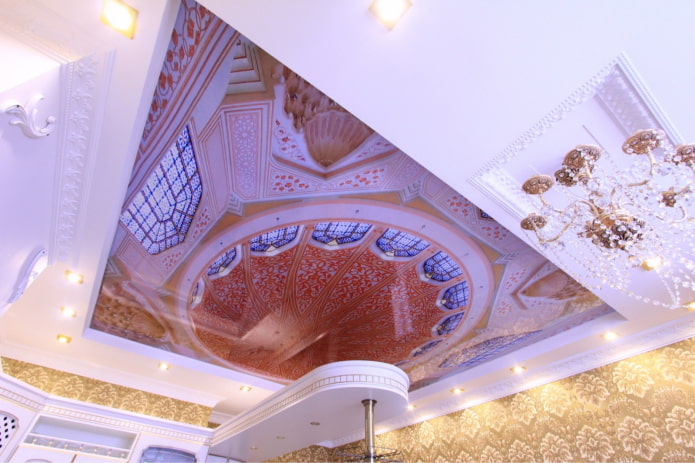
Textured
For the production of textured canvases, a sufficiently dense film with a relief is used, which repeats a certain material. They often imitate expensive fabrics (silk or brocade), decorative plaster or concrete.
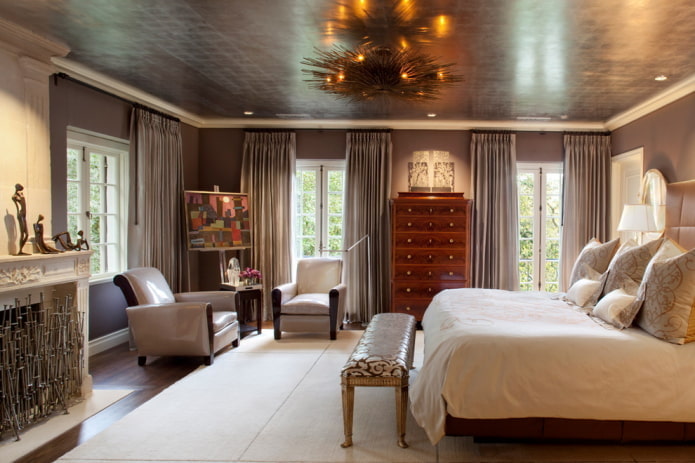
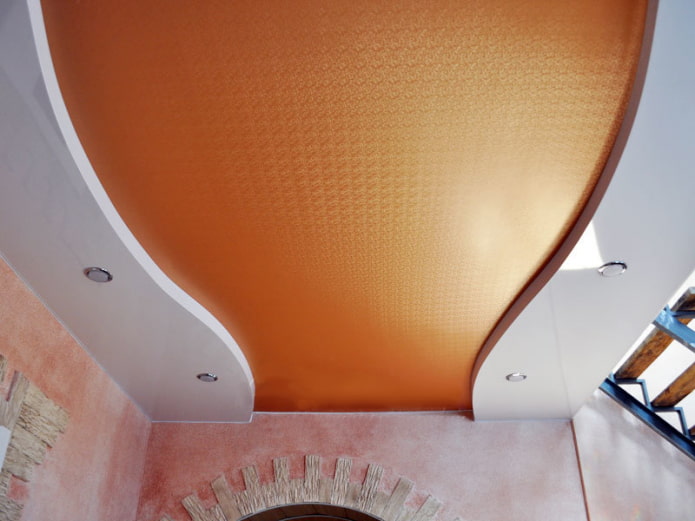
Carved ceiling
They are a perforated sheet. The holes can be of various shapes and be located absolutely anywhere on the surface. Two or more levels are used to create it.

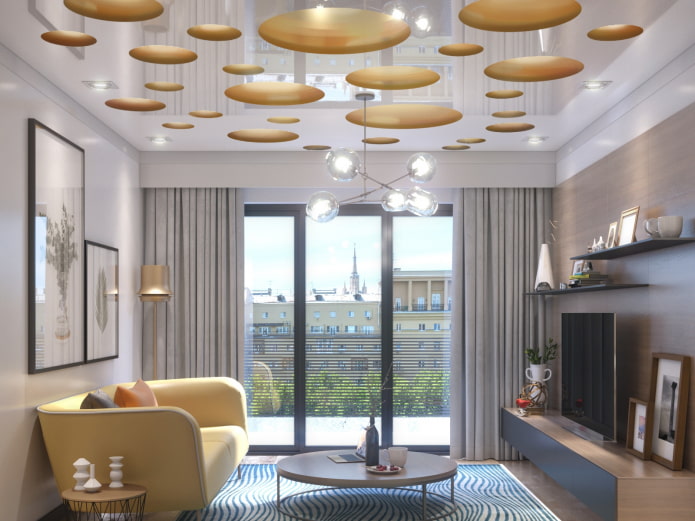
Beautiful photos for inspiration
Various types of stretch ceilings are a modern and most popular finish that fits perfectly into the design of any room. A variety of textures and colors allows you to create an unusual, bright and memorable ceiling design.
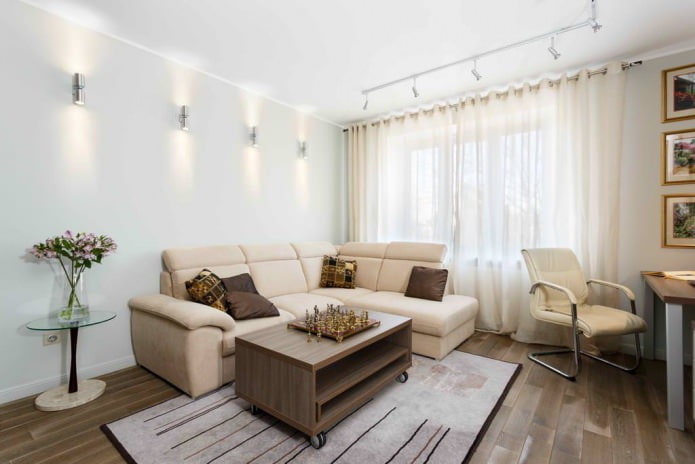
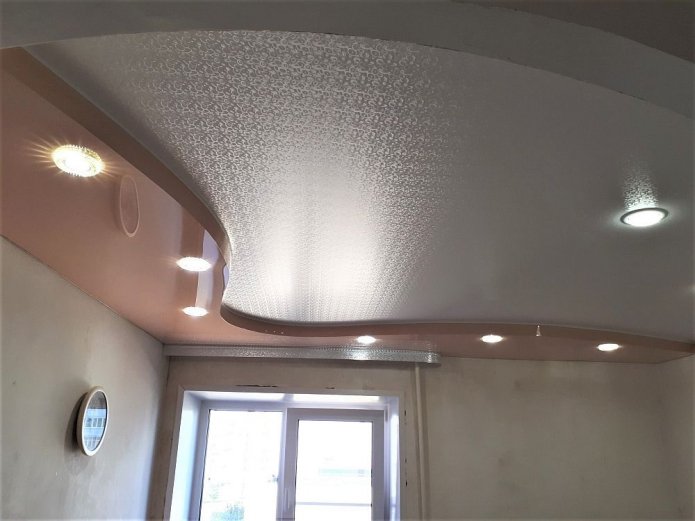

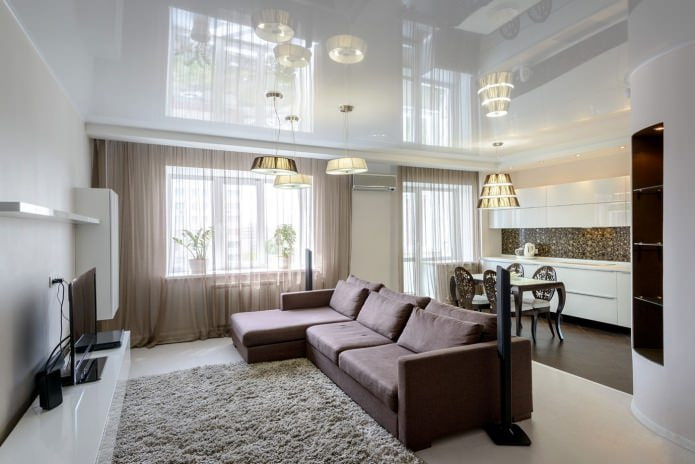
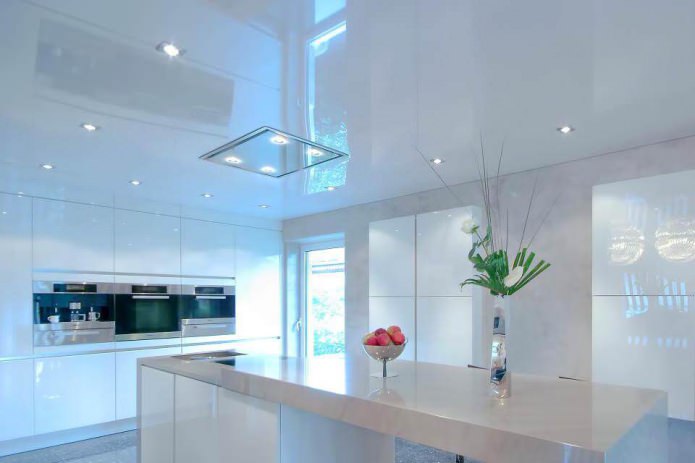
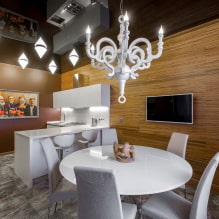
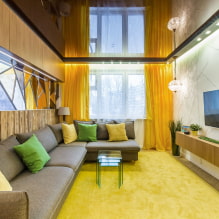
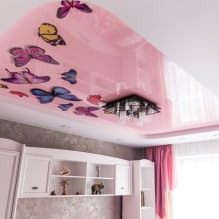
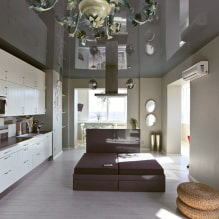
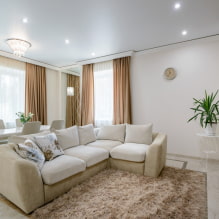
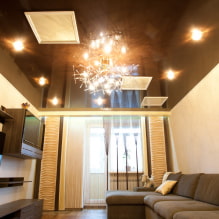
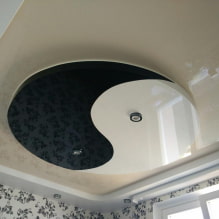
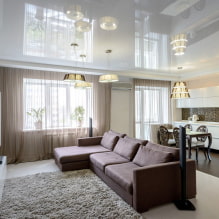
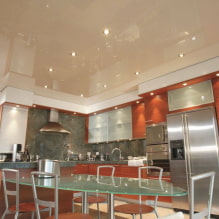
Now reading:
- How to paint the ceiling in the apartment yourself? Step-by-step guide and tips.
- easy DIY ways to update an old sofa that you can do at home.
- Two-level stretch ceilings: 95 photos, inspiration and design finds
- Turquoise Kitchen: 61 Images and 6 Perfect Color Combinations.
- Variety of apartment layouts: 7 popular solutions for your choice.